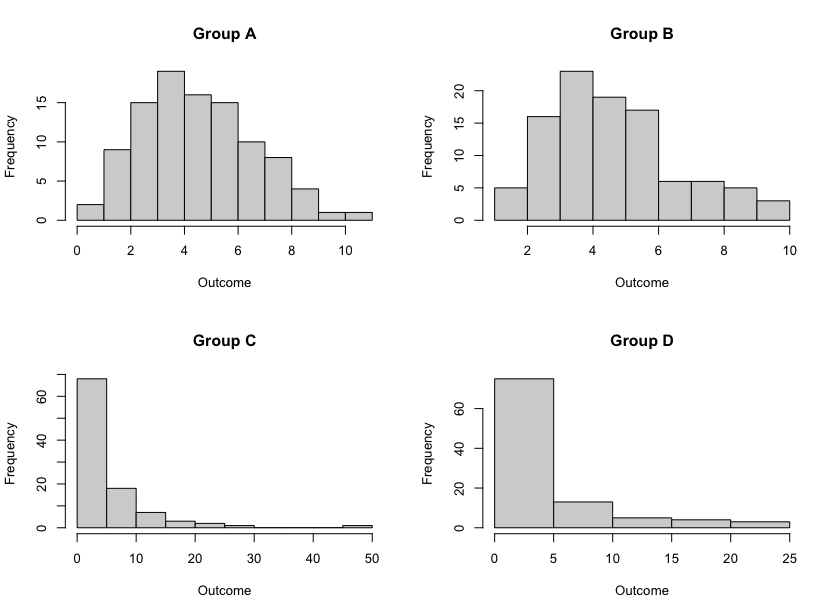I have count data by group for which I would like to to model the outcome using a random effect for group. I was initially planning on using Poisson regression, but checked if the data are overdispersed to determine if a negative binomial distribution should be used.
Overall, the outcome data were indeed overdispersed, so was planning to go with NB. However, when assessing clusters individually, some of the clusters had within-cluster data were not overdispersed (ie, Poisson distributed).
Should I use the overall distribution of the data to determine between Poisson or NB GEE models, or are there alternative approaches when distribution differences by cluster are present?
I am using lme4::glmer and lme4::glmer.nb in R to implement this, for example:
Here are some sample data:
set.seed(123)
df <- data.frame(group = rep(LETTERS[1:4], each = 100),
arm = rep(c("Intervention", "Control"), each = 100),
ncount = c(rpois(100, lambda = 5), rpois(100, lambda = 5),
rnbinom(100, mu = 5, size = 0.50), rnbinom(100, mu = 5, size = 0.50)))
Here outcomes in groups A and B are Poisson distributed, and C and ED are NB distributed.
par(mfrow = c(2,2))
sapply(unique(df$group), \(x) hist(df$ncount[df$group == x], main = paste0("Group ", x), xlab = "value"))
 And from the model information, it appears as if the NB approach is best:
And from the model information, it appears as if the NB approach is best:
poi <- lme4::glmer(ncount ~ arm + (1|group), data = df, family = "poisson")
nb <- lme4::glmer.nb(ncount ~ arm + (1|group), data = df)
data.frame(poi = summary(poi)$AICtab,
nb = summary(nb)$AICtab)
# poi nb
# AIC 2787.536 2122.132
# BIC 2799.511 2138.098
# logLik -1390.768 -1057.066
# deviance 2781.536 2114.132
# df.resid 397.000 396.000
In this example, which generally follows my real data, my plan would be to proceed with the negative binomial, but I am not sure if there are more accurate methods that account for this phenomenon.
